
New Zealand: Wellington and Beyond

While I can’t prove this statistically, I’ve read that a trip to New Zealand is high on many bucket lists. And so it should be.
First you have its capital city, Wellington, which Lonely Planet called the coolest little capital in the world. And so it is.
Located on the southernmost part of New Zealand’s North Island, Wellington is a cultural hub with impressive museums, a lively music scene and, according to some estimates, more cafes and bars and restaurants per capita than New York City, the place where I lived most of my adult life. Yet during my visit, I felt that New Zealand’s second-most populous city still had a strong connection with Nature — and that all those bars and restaurants had not been created at her expense. Unlike New York City, where small and precious oases of green live among towers of steel and granite, Wellington has lots of inviting green space where locals and travelers alike can refresh body and soul. With all that Wellington has to offer, it’s hard to believe that not so long ago, Wellington was the country’s “flyover city,” seen only from the air by tourists jetting between the thermal pools of the north and the mountains of the south.
The first must-see here is New Zealand’s national museum, Te Papa Tongarewa, which means “container of treasures.” As admission is free to this serene and spiritual place, and as it is open every single day of the year (10 a.m.− 6 p.m. and 10 a.m. – 9 p.m. on Thursdays), it’s possible to visit more than once to browse its collection of some 200,000 items. A series of guided tours is available, as well as an audio guide and a visitor booklet.
The History Collection alone is a treasure trove of 25,000 items, including over 7,000 pieces of dress and textiles, the oldest dating back to the sixteenth century.
The other exhibits range from objects collected by Captain Cook, including his Hawai’an feather cloak) to costumes worn by Xena, Warrior Princess, as well as a Xena doll. (Xena first appeared as a character on Hercules: The Legendary Journeys’ – and rates so well that she was given her own show, which was made in New Zealand between 1995 and 2001. American Secretary of State Madeleine Allbright named Xena as a role model.)
There’s a New Zealand Post archive, a valuable collection of around 20,000 stamps and related material; historical weapons, coins and medals; ceramics from the old world and from modern New Zealand; a furniture collection of around 250 items; precious metalwork; and rare books, photographs, and papers.
For kids, the Colossal Squid exhibit is a big draw, featuring as it does the largest known specimen of its kind, weighing over 1,000 pounds when caught. The exhibit featuring the world of the Māori, the first settlers, offers insight into this vital culture, while the Awesome Forces exhibition demonstrates how the forces of Nature – earthquakes, volcanic eruptions and the weather – played a part in shaping New Zealand.
For me, visits to any museum end in the museum shop, where I look for gifts and souvenirs that aren’t the same as those found in museum shops everywhere. Here, I found books on Captain Cook’s explorations, on New Zealand’s Maori culture, on the country’s birds; handmade Maori jewelry; exceptionally beautifully cards (more suitable for framing than for mailing); glass pieces; bone carving – and plenty of books for children about the country and its culture.
On the ground floor, in the heart of the museum is a light and airy family-friendly café that offers an all-day menu and also serves espresso, wines and beers. This very user-friendly museum also has free Wi-Fi hotspots; access and help for people with disabilities and rooms for parents with young children.
As New Zealand is the land of Middle Earth and home of the hobbits, fans of the Lord of the Rings trilogy make a point of visiting the Weta Cave, a mini-museum, mini-theater and shop in Miramar, Wellington. Described as “an emporium of all things wild and wonderful,” the Cave is part of the Weta Workshop, best known, not only for work on the Lord of the Rings trilogy, but also on King Kong, The Chronicles of Narnia, Avatar and The Adventures of Tintin.

Guides explain the natural history that has lead to exquisite limestone formations in the Waitomo Caves. Courtesy of Tourism Holdings
The Weta Cave screens a behind-the-scenes look at Weta and interviews with Weta co-founders Peter Jackson, Richard Taylor, Tania Rodger and Jamie Selkirk. In the mini-museum are characters, props and displays from the movies and stories about how they were created. For sale in the shop are limited edition hand-crafted sculptures by the Weta artists; Weta-designed clothing, jewelry and souvenirs; Doctor Grordbort’s Rayguns and books, DVDs, magazines, posters and art from the world of movies.
The company is named after the Weta, a cricket-like insect described as “a very cool, prickly little monster, unique to New Zealand.” (The Māori name for the giant species is Wetapunga or “the god of the ugly things.”) The Cave is open 7 days a week, from 9 a.m. – 5:30 p.m.; admission is free.
| A unique eco-attraction is Zealandia, formerly known as the Karori Wildlife Sanctuary, just 10 minutes outside the city. This 550-acre sanctuary shelters some of New Zealand’s rarest birds, reptiles and insects in the wild, including the Giant Weta, the Tuatar lizard. During the night tours, the elusive flightless bird, the Kiwi, may appear. |
There’s more Nature on view at the Botanic Garden, best reached by a cable-car ride (panoramic city views are a bonus). The garden encompasses almost 62 acres of varied landscape, protected native forest, conifers, specialized plant collects and colourful floral displays. It is classified as a Garden of National Significance by the Royal New Zealand Institute of Horticulture and is a Historic Places Trust Heritage Area. Admission here is also free.
Wellington is a great walking city. Along lively Cuba Street, there are restaurants, bars and boutiques selling trendy fashions. The Trawling Sea Market serves what may be the best fresh-from-the-sea fish and chips (the fish would be terakihi, not cod or haddock).
In the Lambton Quay commercial district, in the heart of Wellington’s Golden Shopping Mile, is the city’s iconic department store, Kirkcaldie & Stains (think Macy’s in New York City!). I was welcomed by a friendly Commissionaire at the front door and ushered inside, where browsing as well as shopping is still relaxed and civilized.
Courtenay Place, a virtual Restaurant Row, offers all sorts of ethnic flavors: Chinese, French, Italian, Indian – and more. Café culture is strong throughout the city, so it’s possible to sample the locally roasted coffee and compare it with Starbucks (several locations in the city).
For some good photo ops, there are Parliament House, known as The Beehive (when you see it, the reason for the name will become obvious) and the Mount Victoria Lookout, which offers a spectacular city panorama.
On a balmy day, a walk along the waterfront provides pretty views and great people-watching; on the weekend, the markets sell everything from boutique wine and handmade chocolate to jewelry and other crafts.
And, of course there is plenty of glorious food (and wine) to sample in Wellington. One of the things I loved about dining here, whether at a simple café on Courtenay Place or a distinguished restaurant on the waterfront, is that the food is what food should be – uncontaminated and un-tampered with. Read a label and you won’t find any un-pronounceable chemicals or additives.
Among the special dining venues is Logan Brown, which offers sophisticated cuisine, a good wine list and excellent service in a very pretty European-style setting with Corinthian columns and an ornate domed ceiling. Martin Bosley’s was my favorite; the fresh fish, sourced from clean waters is prepared simply, and the delicate sauces enhance rather than mask the flavors. Desserts, especially those made with chocolate, are memorable. For outstanding Asian food, the French culinary team at Hippopotamus (at the Museum Hotel) shines.
For my best culinary adventure, I traveled northwest of Wellington, to Ruth Pretty’s home and cooking school on the Kapiti Coast. Ruth Pretty is New Zealand’s “top chef,” the one government officials turn to when someone important visits the country. In 2010, Ruth “tutored” Prince William and New Zealand’s Prime Minister at a Premier House barbecue. She also catered the premieres of The Lovely Bones, Lord of the Rings, Return of the King and King Kong (all filmed in New Zealand).
When I arrived, with a group of travel writers, at Springfield, Pretty’s home, tea and espresso and beauty cake awaited. We toured the sustainable garden, where Ruth sources many of her ingredients — and then we got to work: making wood-fired pizzas in the garden. I love making pizzas at home, but here, it was especially easy as Ruth’s helpers had prepared the dough (which had risen) and sliced and diced the “fixings.” With advice from Ruth’s staff, everyone made a personal pizza, and by the time they went into the oven, we were all hungry. Tasting was the fun part; my pie wasn’t bad, but it couldn’t match those produced by my favorite pizzerias in New York or at the Jersey Shore.
Pizza was only the first part of our food adventure. In the beautiful garden setting, we were served a multi-course sit-down dinner which started with mouthwatering Barbecued Scampi Salad with Lemon Thyme Dressing and went on – and on, to include: West Coast Whitebait fritters, Pan-fried Paua with Lemon; Herbed Mussels with Soused Red Onions; Barbecued Flatbread; Barbecued Butterflied Leg of Lamb with Rosemary and Beetroot Balsamic Sauce, Cucumber and Yoghurt Salad; Spanish-style Pepper with Garlic and Sherry Wine Vinegar; Sautéed Springfield Greens, Handpicked Springfield Garden Salad with Walnut Dressing; New Zealand Artisan Cheeses with Homemade Crackers and Fig, Orange and Almond Roll. And for dessert – yes, everyone had dessert – it was Manuka Honey Ice Cream and Long-stemmed Strawberries.
The wines that accompanied our meal: Palliser Estate Martinborough Methode Traditionelle 2007; Ned Marlborough Pinot Gris 2009; Elephant Hill Hawke’s Bay Sauvignon Blanc 2010; Neudorf Nelson Chardonnay 2010 and Ata Rangi Crimson Martinborough Pinot Noir 2009. What was especially appealing about all these wines was that they were reasonably priced and generally available in the United States.
We left Springfield with all the recipes for the dishes we’d consumed and a copy of Ruth Pretty’s cookbook. And when it was time to leave New Zealand, I checked off one more item on my bucket list and cherished my new treasure trove of memories.
Travel Information: To travel to Wellington, my choice would be Premium Economy on Air New Zealand’s Boeing 777-300ER, the airline’s flagship. These luxurious seats have a hard shell that doesn’t recline — saving you from smashed knees courtesy of the seat in front of you. The recline happens in the softer part of the seat, while the accompanying beanbag on the floor creates a comfy cushion for fully-extended legs. The shell shields you from your neighbor, providing a welcome measure of privacy if you’re traveling alone.
For couples, the dual seats create a kind of love-seat, for dining and chatting. The personal entertainment center is state-of-the-art, with movies, music, TV, etc. — and a cradle for your iPod. Headphones are like those distributed in Business or First Class; blankets and pillows are cozy and invite sleep. The food, accompanied by New Zealand wines, is as good or better than anything I’ve had when flying domestic Business Class. The final luxury: Air New Zealand provides a concierge throughout the plane (even in regular economy), whose job it is to answer questions and provide those little services that ease the strain of long-distance travel.
There is an abundance of hotels in Wellington. My favorite is the Museum Hotel (http://www.museumhotel.co.nz/), a contemporary boutique property with stylishly decorated rooms featuring all modern amenities, some overlooking picturesque Wellington Harbor. The residence section of the property has apartments with kitchenettes and laundry facilities. As befits its name, the hotel houses an exceptional art collection. To round out the options for a comfortable stay, there is an indoor pool (and sauna), a fitness center and a day spa/salon. The Museum’s premier restaurant, Hippopotamus, serves lovingly prepared French cuisine and an artistically presented high tea. The best part: it’s next to the Te Papa Tongarewa museum.
For information on Wellington, consult http://www.newzealand.com/us/ and http://www.wellingtonnz.com/visitor_information –and a knowledgeable travel agent.
Beyond Wellington…
Since travel to New Zealand is so time-consuming (especially from the East Coast), many visitors rent a car (or fly) to some of the country’s many outstanding scenic areas for a taste of adventure travel or simply to photograph places unique to this part of the world.
Rotorua is one such unique place. This city in the northern part of North Island sits squarely on the Pacific Rim of Fire, where you can see the powerful forces of Nature that created New Zealand. It has one of the world’s liveliest fields of geothermal activity, evidenced by boiling mud pools, hot springs and shooting geysers.
The colors and shapes seen in the photograph of Waimangu’s volcanic terraces are real. They emerged in 1886 when the Rotorua region was shaken by the eruption of Mt Tarawera. The thermal valley is an otherworldly landscape, with eerie steam-filled craters, blue-green lakes, pristine native bush and rare wildlife.
The Rotorua region also offers a unique adventure: riding a raft down Tutea Falls on the Kaituna River. This is the highest commercially-rafted waterfall in the world – and the seven-meter drop (23-feet) elicits screams from young and old alike. (Check out You Tube videos for a vicarious thrill.) Behind the waterfall are the caves used by the Maori to hide women and children in time of war.
Another exciting falls adventure can be found at one of the most visited natural attractions on North Island: the Huka Falls on the Waikato River. This is a group of waterfalls that drain Lake Taupo, with a volume that often approaches 220,000 liters (over 58,000 gallons) a second. Hukafalls Jet takes thrill-seekers within a few meters of the base of the falls in their jetboats.
Just to the south of Rotorua is another of North Island’s “hot” (a piping 74°C or 165°F) geothermal attractions, the Waiotapu (Wai-O-Tapu) Champagne Pool. This unique natural landscape, perhaps the most colorful and diverse in New Zealand, has been created by volcanic activity over thousands of years.
The bright orange rim of the pool contains a mixture of elements, including silver, gold and mercury. The bubbles that fizz to the surface of the pool, which gave the pool its name, are carbon dioxide. As there are clearly defined tracks around the rim, it’s possible to explore the area through a series of walks, with each walk presenting a different vista.
A very different kind of landscape is found in Hawke’s Bay, located on the east coast of New Zealand’s North Island. Steeped in history, this region is the country’s second largest wine-growing region and one of its oldest. Blessed with plenty of sun and a temperate climate, it is the leading wine and food tourism destination. Many of New Zealand’s best wineries are here and within easy reach of visitors. Chardonnay is the most widely planted grape variety, but the long ripening season makes possible such later-ripening red grape varieties as Cabernet Sauvignon, Merlot, Cabernet Franc and Syrah.
Sun and sand are the attractions of the Northland Beaches. Some offer world-class surf, others are great all-tide swimming beaches that attract young families. Still others are so long that it’s possible to walk great stretches without seeing another person. These quiet beaches are ideal for romantic alfresco dining. Provisions can be purchased at roadside stalls, the wine at one of the vineyards.
All photography by Lillian Africano except where noted.






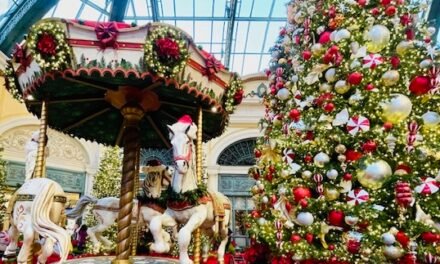

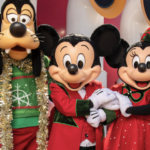
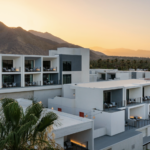






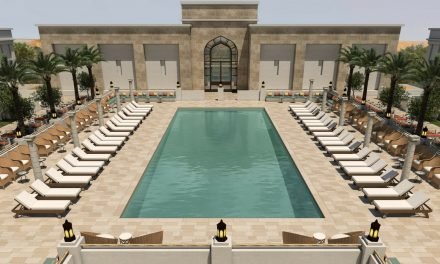
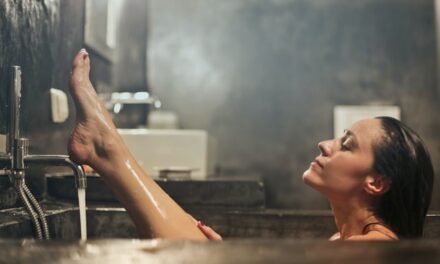

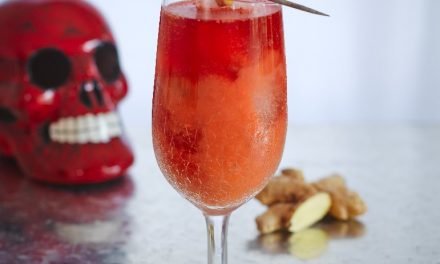





















Trackbacks/Pingbacks